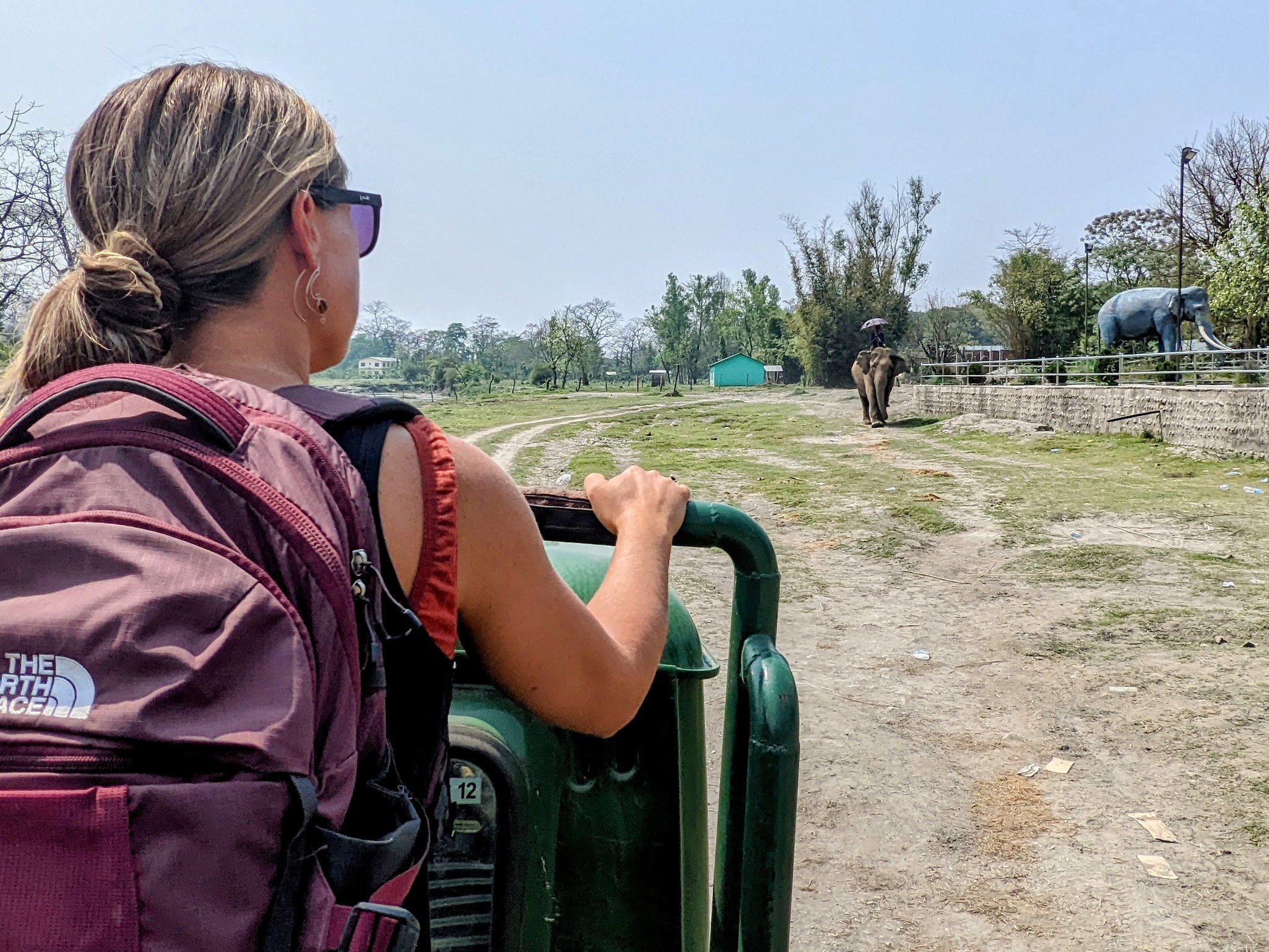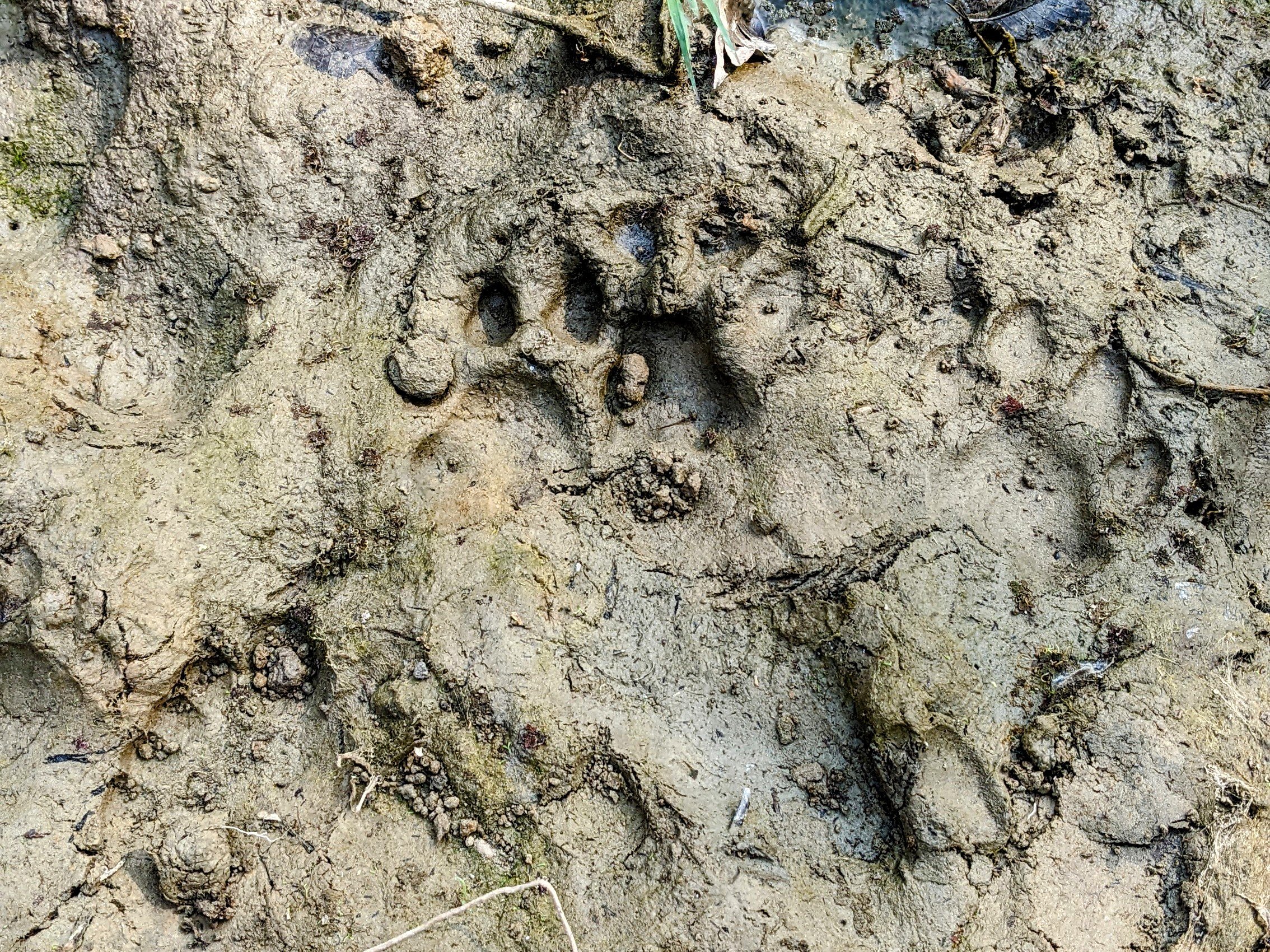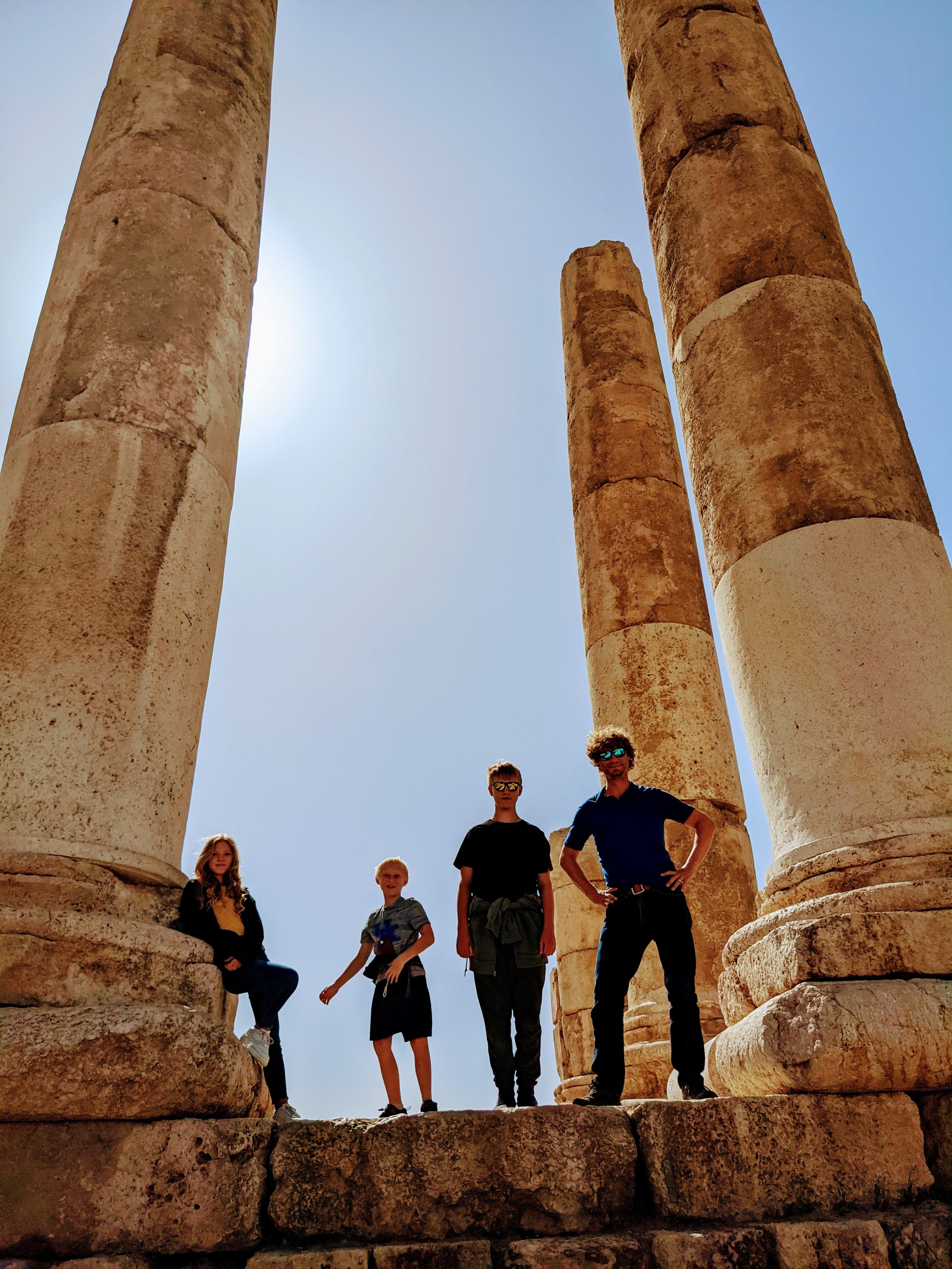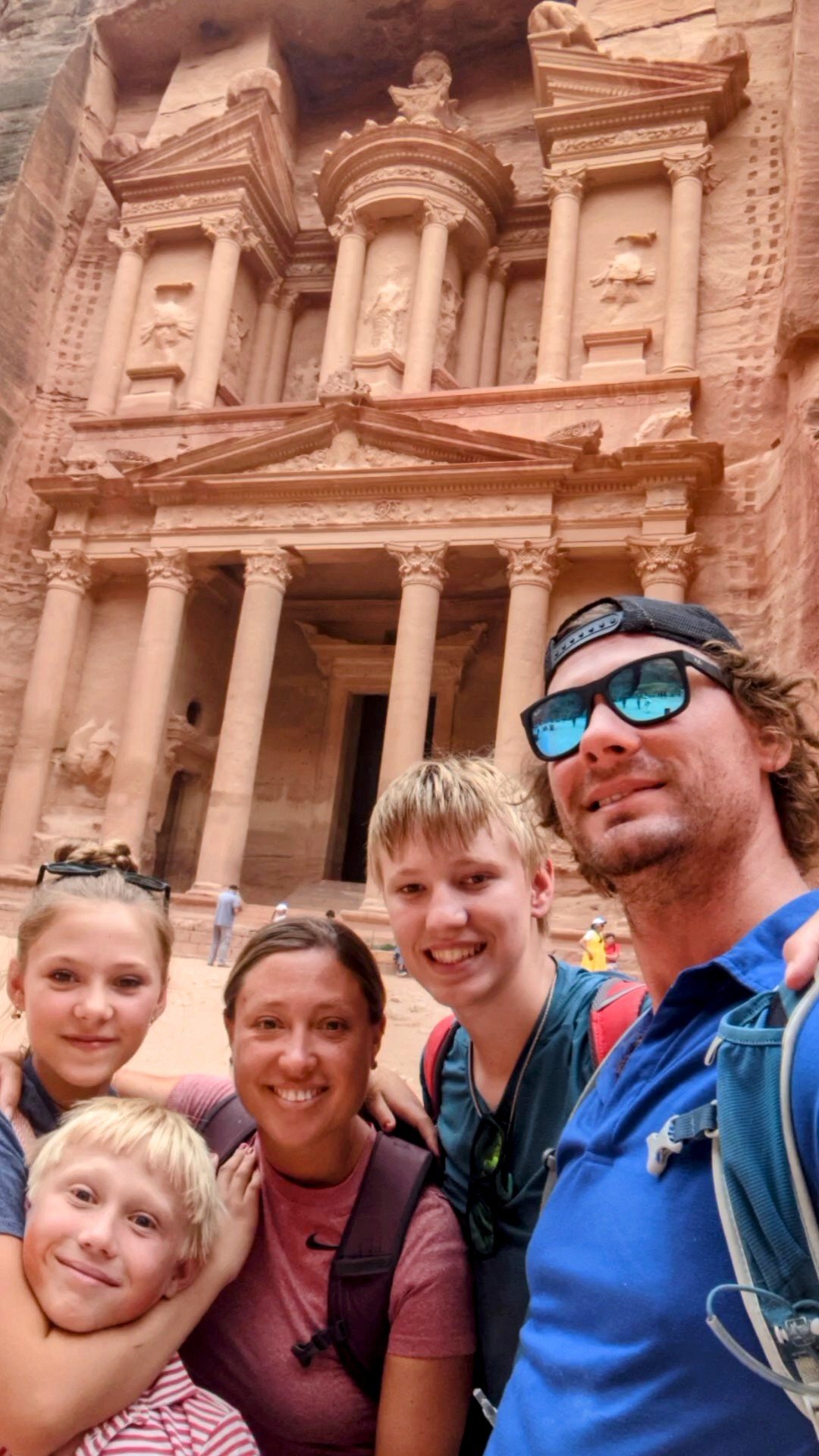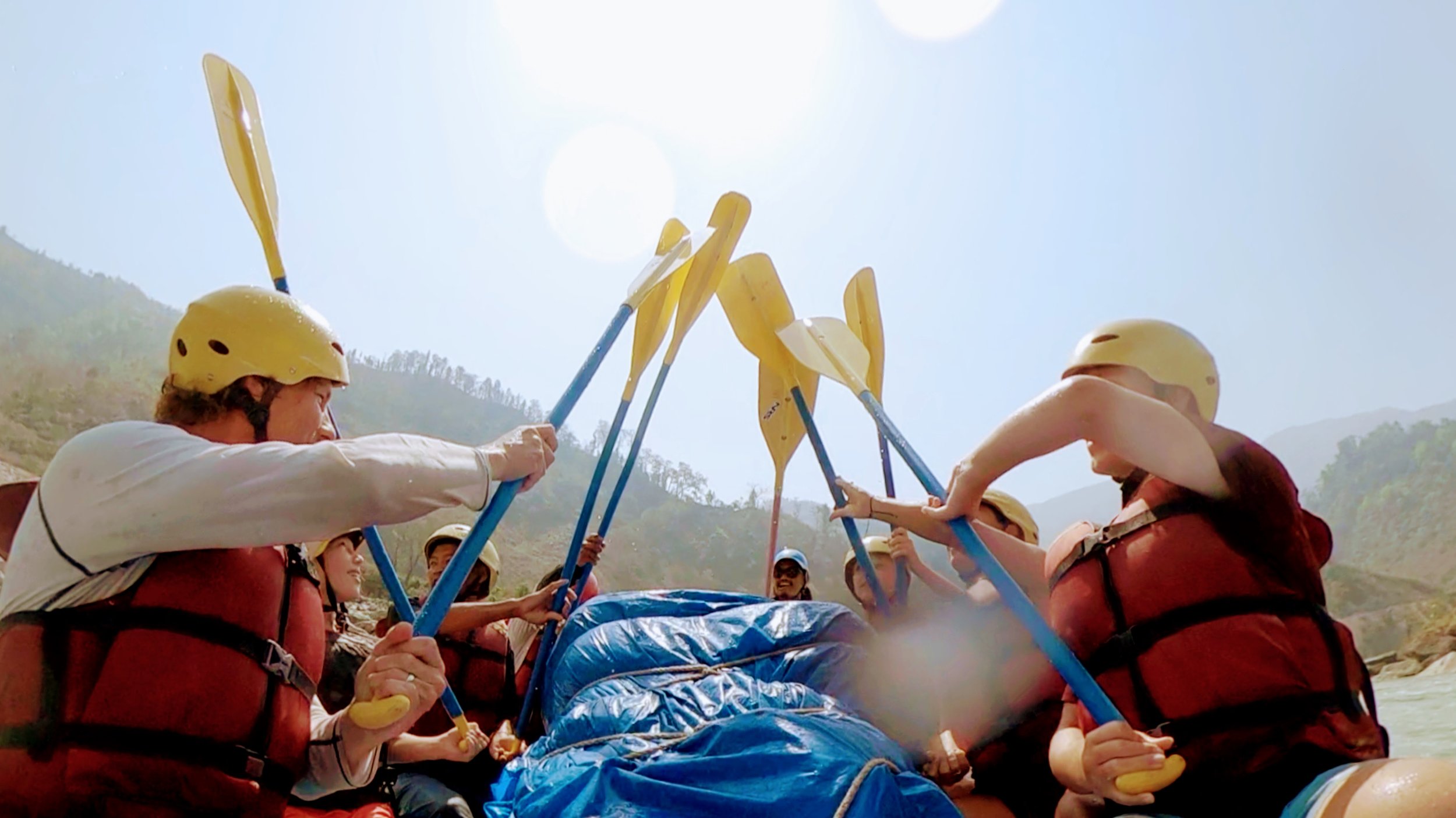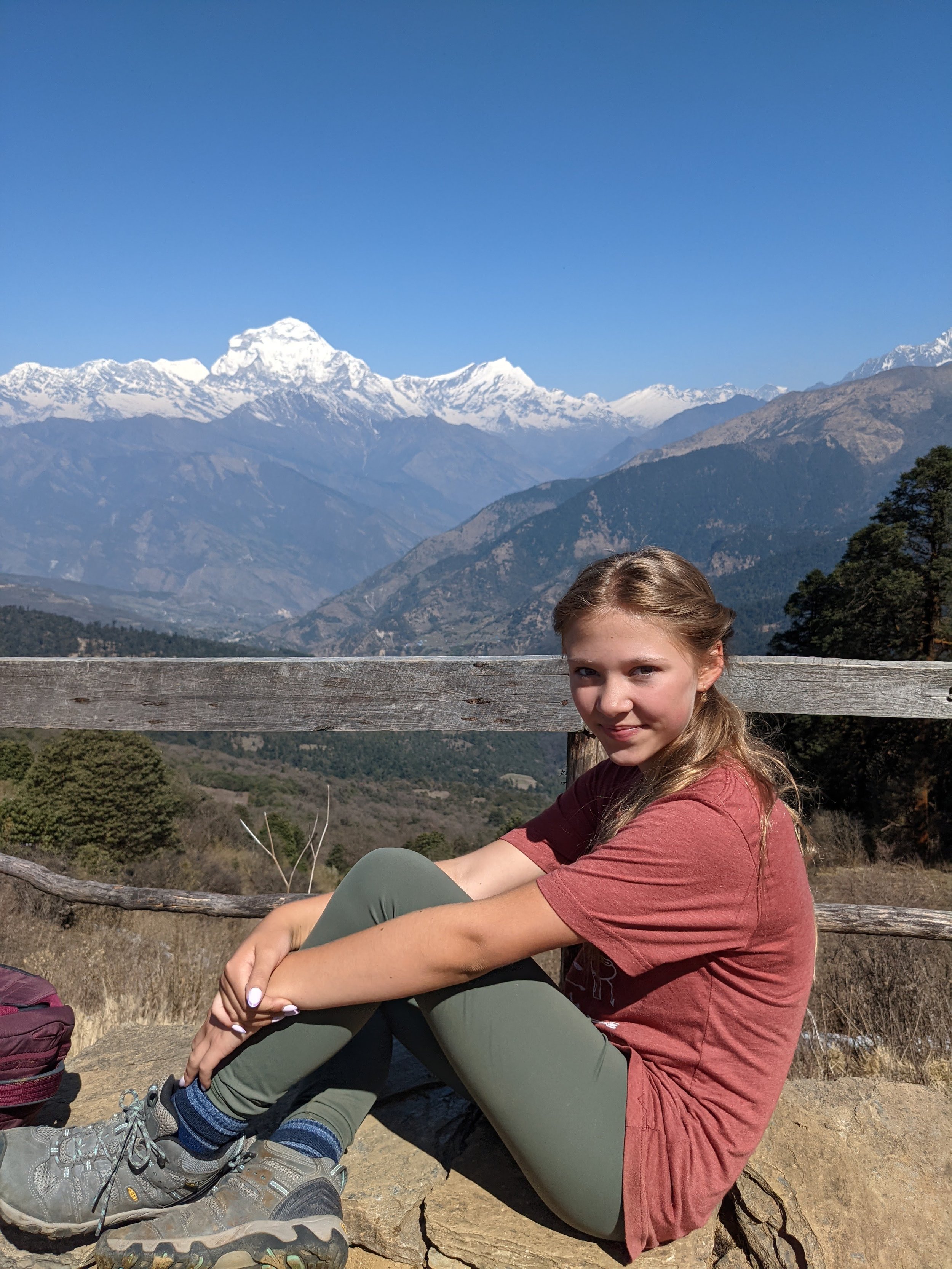Barauli Homestay and Western Chitwan Safari with Kids
The Jeep Safari in Western Chitwan
Our Arrival in Chitwan
After spending 3 extremely exhausting days trekking the Annapurna Poon Hill circuit, 2 days transitioning back to Pokhara and then to Bandipur, and 2 days white water rafting on the Seti River, we embarked on the bumpy, dusty, slow drive to the Terai to spend 2 days at the Barauli Community Homestay. At that point, I was half dead from white water rafting and camping with a horrible case of food poisoning. The other family members were in slightly better health, but completely exhausted. We arrived at the homestay on Gus’s 10th birthday. I had bought him a few presents and some small treats, but had no idea how I was going to get a birthday cake and was feeling very guilty about keeping him away from his friends and family on such an important day. After we got settled in, I headed to the kitchen to talk it over with the staff. I hadn’t seen a single real supermarket on our 3 hour drive from Gaighat and was not very optimistic. To my great surprise, when I told them it was Gus’s birthday, they said they knew and they already had a cake ready for him. Our trekking guide, who left us in Pokhara 3 days before, had called the Homestay and had them arrange a cake for Gus. At this point, I had to walk away because I immediately began sobbing. I was so touched by this act of kindness that I am still crying about it now while writing this post in a coffee shop in Athens, Greece. This set the tone for the Barauli Homestay for us and is emblematic of just how warm and kind Nepali people are.
The Barauli Community Homestay
The Dinning Hall at the Barauli Community Homestay, Western Chitwan
The Barauli Community Homestay is a small community of cottages that was established as a part of the Community Homestay Network. The Community Homestay Network is a non-profit organization that helps local women throughout Nepal establish viable tourism based businesses by providing loans and training in English, hospitality management, and Homestay management. The Barauli Homestay is managed by local women in the Terai community. It consists of a central dining hall where meals are served and where you can get a drink anytime of day, a small courtyard where cultural dances are performed, and 6 surrounding one room cottages with attached bathrooms. The Homestay offers multiple activities as part of your stay, including bird watching, jungle walks, jungle safaris in Western Chitwan, village tours, sunset bike rides, cooking classes, and cultural dance performances. The people are very friendly and eager to please and help their guests. The main guides speak conversational English and have extensive knowledge of local birds and animals. Overall, it is lovely and a unique way to experience the local culture. Here is what you can expect with your stay.
The Accommodations at Barauli
As we were driving into the region, I have to admit, I was feeling a little nervous about the accommodations. The local Tharu people live in huts made of bamboo covered in mud and I wasn’t sure what we were getting into. When we arrived, I was pleasantly surprised by the lovely little cottages that were designed to replicate the look of the Tharu homes but sturdily built with modern materials and equipped with a ceiling fan, electricity, and an attached bathroom with a shower and western toilet. As there are multiple mosquito borne illnesses in the area, the beds were also covered with essential mosquito nets. As a family of five, we had two rooms: one with three twin beds and a second with a double bed and a twin bed, which was more than we needed. Be aware that there is no air conditioning in the cottages. When we were there in early March, the daily temperatures reached 92 degrees Fahrenheit and the rooms were steamy by the afternoon. The nights were cool enough that sleeping was tolerable but I can imagine summer without air conditioning being pretty brutal. The dining hall does have air conditioning and provides some relief during the hottest parts of the day. Wi-Fi is available throughout the complex but strongest in the dining hall.
The Food at the Barauli Homestay
The Equivalent of Dal Bhat in Western Chitwan
The owners and employees at the Homestay seemed to have a good understanding of food safety and what was required to safely prepare food for Westerners. They have their own water filtration system and the filtered water is drinkable and used to wash fruits and vegetables. This was a great relief and we were very excited to be able to safely eat fruits and veggies for the first time during our stay in Nepal.
Three meals a day were included with our stay. There is a standard Nepali tourist menu for lunch and breakfast including both local and continental options. Dinner is the same for everyone and the traditional Nepali Special or Dal Bhat (rice, curried vegetables or meat, lentil soup, saag, and pickled vegetables). The dinner was great. The breakfast and lunch were average. You can buy sodas, beer, wine, or cocktails a la carte if you wish. They also served several handmade mocktails with lunch that were refreshing and delicious. One was a Hibiscus tea and the second was a version of a non-alcoholic Mojito.
The Chitwan Jeep Safari
Wendi Standing in the Back of the Jeep as a Man Passes on an Elephant
Greater One-Horned Rhinoceros Leaving the Water in Western Chitwan Nepal
The Safari involves riding on elevated bench seats in the back of a truck/Jeep. The seats are uncovered and you will be exposed to the dust, smoke from local rubbish fires, and the elements. I suggest bringing a mask just in case you get stuck behind some local motorbikes stirring up the dust. Once we were inside the jungle, the ride was much more pleasant due to the shade of the forest canopy and slightly cooler temperatures. On our original agenda, we were scheduled to go for the safari at 1:00 PM. Given the temperatures, this didn’t seem ideal and we asked to change the safari to 8:00 AM. This was definitely the right move and I would highly recommend going for safari early in the morning.
The Injured Wing of the Eagle Our Guides Caught and Took to a Rescue Center, Western Chitwan Nepal
This Safari takes you through borderlands around the national park and into a small sliver of Chitwan National Park proper on the western side. We saw two one-horned rhinos, Rhesus monkeys, lots of deer, many types of colorful birds, one gharial, and an injured eagle. Rescuing the injured eagle was the most exciting part of the day. We stopped alongside the eagle, thinking our guide was going to phone-in the location of the injured bird. Then he surprised us by asking Joey if he would help him catch it. Joey agreed and the guide, our driver, a guide in training, and Joey took off into the bushes to capture the bird. They returned seconds later with the eagle in hand, its large talons held tightly by our driver. They wrapped the eagle in a blanket and he joined us in the back of the truck. Luckily, the bird rescue center was only 3 minutes away and we promptly delivered the bird to capable hands. We ran into the only other group of tourists we saw all morning at the rescue center, a stereotypical group of late middle aged Brits in full khaki safari gear, including vests, hats, and binoculars who looked like they were straight out of the Robin Williams version of Jumanji. It was classic.
Tiger Paw Print in the Mud in Chitwan National Park Nepal
Rhesus Monkey Western Chitwan National Park, Nepal
It is also possible to see tigers and elephants in this part of the park, but both are rare. The park performs controlled burns in and around the park in early March, so this was the perfect time for a safari since the new grass was growing but wasn’t tall enough to obstruct our views. The safari lasted about 5 hours, which was about all of the exposure we could handle.
The Cooking Class at Barauli Homestay
Slicing Vegetables as Part of the “Cooking Class” at the Barauli Homestay
Ok, this one really surprised us. I assumed we would be doing the cooking class in the main dining hall, so I was a bit confused when we passed up the dining hall and headed into the village. For our cooking class, we entered into one of the traditional Tharu huts, approximately 20 x 20 feet divided into two smaller rooms. There was a bamboo mat on the floor and a fire in the corner. A local Tharu woman then proceeded to show us how to cook dal Bhat over an open fire. Since she couldn’t speak English, the instructions were limited but we participated when prompted. We all sat on the dirt floor and peeled and cut the vegetables. We then helped to make curry from scratch using a grinding stone. Next, we helped to cook the vegetables over the open fire.
Cooking Over the Open Fire in the Kitchen
At this point I was on day 2 of the worst food poisoning of my life and this experience was at the upper limits of what I could handle. It was about one million degrees and the smell of food, which I normally would have loved, was on the verge of sending me to the water closet at any moment. With a few small breaks outside to catch some fresh air, however, I made it through. The food, like most of our experiences in Nepal, was delicious in the end.
This experience could have been better executed. I get that they wanted it to be authentic, but sitting on the dirt floor while preparing food, the temperature in the cramped hut, and the indoor fire were a little too much. Additionally, the experience would have been much better if the cook could have communicated with us and provided a little more instruction. I think I would skip this one next time.
The Cultural Dance at Barauli
Traditional Dress and Dance of the Tharu People in Western Chitwan Nepal
A group of local women assemble to perform 4 local dances with instrumental accompaniment for guests at the home stay. As we were the only guests at the time of our stay, we were able to choose the time for the performance and had it scheduled after dinner at 7:30. The dances were great. The women were skilled and beautiful. Beware that they will expect audience participation on the last dance and be prepared to get a little sweaty. They provided us with popcorn and some sort of vegetable pakora during the show. (FYI, popcorn in Nepal is always a good idea. It’s usually freshly popped on the stove or open fire.)
Other Activities in Chitwan
The bike ride to the river is on the dirt roads through the town and will be dusty and bumpy. You will be sharing the road with motorbikes and occasional cars. Gus and I opted to take a Jeep ride to the river for sunset instead and this was the way to go.
The jungle walk/bird watching was also skippable. I did this one alone since everyone else was still resting after the safari. The guide seemed legitimately concerned that we might encounter a charging rhino or a tiger and kept giving me instructions on what to do in those situations. We did in fact see two rhinos who both stood up and exited their watering hole when we walked by. At this point my guide clearly thought a charge could be coming and told me to drop my bag and run fast if it happened. He also said we may need to hide behind or climb a tree. At this point I became thoroughly convinced that a motorized vehicle is the only way to travel in a jungle.
Getting to Western Chitwan
The road to Western Chitwan is “under construction”. What this means is that approximately every 50 feet there is a section of road that has been torn up and you will have to drive around it on a bumpy, temporary dirt road. At least half of the total “highway” surface is under construction and the entire ride will be moving at a snail's pace and extremely bumpy. Just settle in for at least 3 hours to Pokhara and 5 or 6 to Kathmandu.
While we drove to Barauli, we flew back to Kathmandu. It’s a very close contest between the two methods for the most horrible travel experience ever. The flight back to Kathmandu was delayed 3 hours, meaning we spent 5 hours in a tiny, hot airport with pit toilets in Bharatpur waiting on our plane. The plane itself felt as though it might fall apart at any moment and the turbulence is the worst I have experienced in a decade. From what I can tell, that’s all pretty standard for domestic air travel in Nepal though. You should always expect delays.
What We Liked About Western Chitwan:
The friendly, helpful people
The Safari
The accommodations
The cultural dance
The sunset on the river
The food safety
Seeing what life is like in the local village
What We Didn’t like about Western Chitwan:
Getting there
The cooking class
The bike ride
The terrifying jungle walk
The lack of air conditioning
Summary
Overall, this was a good experience and a great way to get to know more about the Tharu people and culture as well as see some cool animals. I will never forget Gus’s face when he was surprised by his birthday cake on our first night there and the place will always hold a special place for me because of that. Plus, it always feels good to support a local business run by women!



